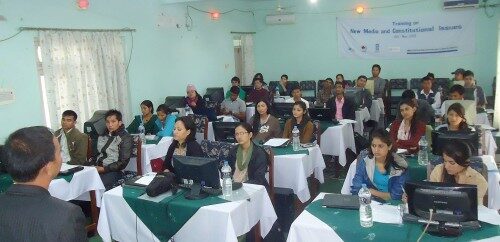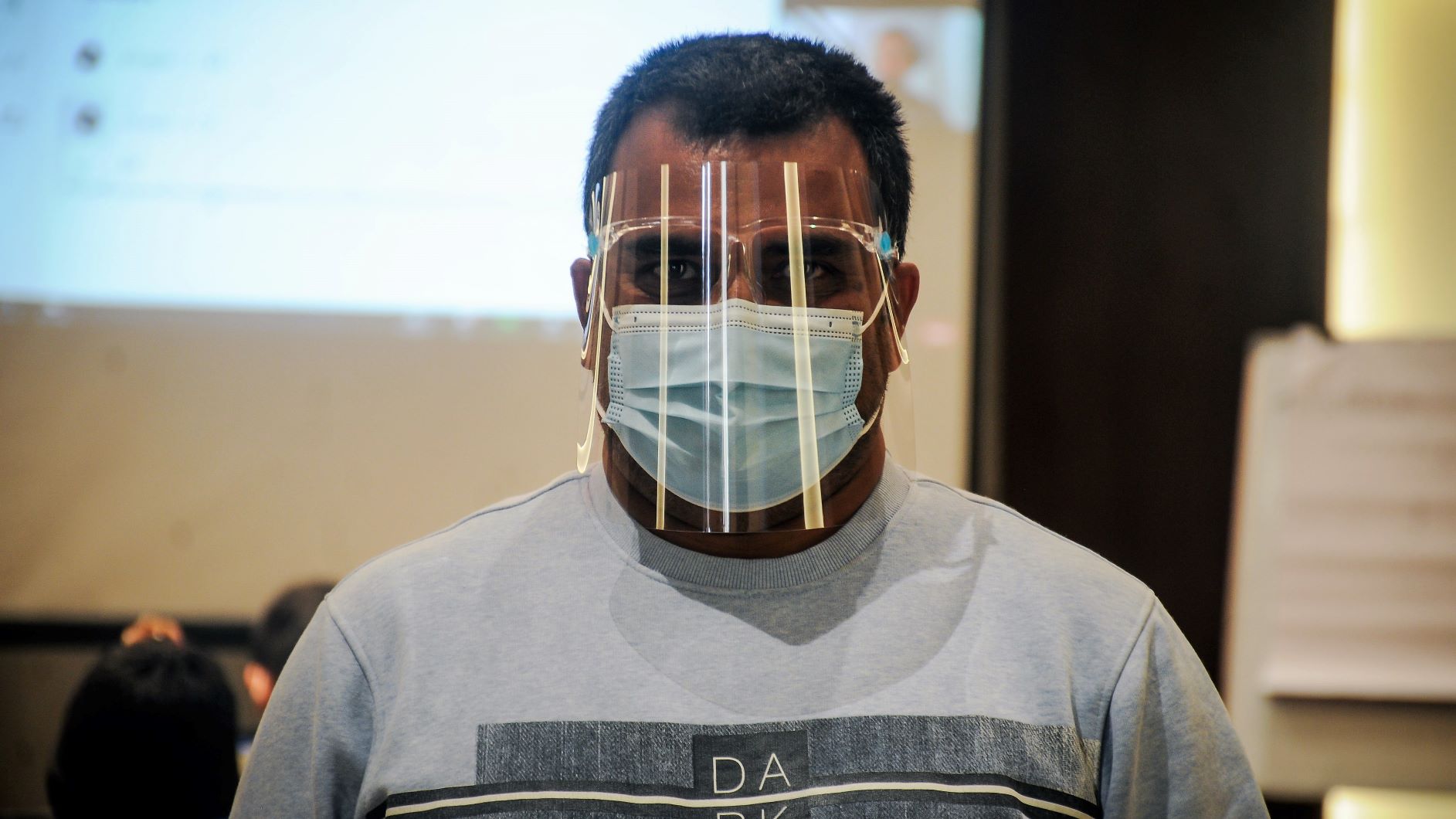Unethical Misinterpretation by Rajdhani
On Wednesday, Dec 19, Rajdhani national daily newspaper published a front-page photo of Prime Minister Baburam Bhattarai and Chief Justice Khilraj Regmi. The five-column photo shows Regmi standing while PM seems to be bowing to CJ with his hands joined together.
The captain says: “Need Support Your Honor: Prime Minister Dr Baburam Bhattarai who is also the Minister of Law greeting Chief Justice Khilraj Regmi during his participation in a program organized to mark 22nd anniversary of Justice Council.”

The Everest Story
The story of how Twitter users from Nepal found out a misidentification of Mt Everest by NASA in a picture that went viral on web and helped in correction of error. Continue reading…
#NetFreedom: Deception in the air
(to mark the International Human Rights Day)
How you feel if someone says: “Eat as much as you can (before the food is ready)” and when the food is ready, you are told: “That’s enough: you are eating too much.”
That’s exactly what is happening with our rights to freedom of expression and opinion!
Citizens around the world living in democratic countries were guaranteed rights to freedom of expression for long. The Universal Declaration of Human Rights, promulgated long ago in 1948 by UN General Assembly, has explicitly stated it in Article 19.
All democratic nations around the world have copied, rephrased/translated and pasted the text in their constitutions. As citizens we’ll thought well we’ve individually rights to freedom of expression and opinion.
We didn’t have a powerful medium through which we could effectively exercise the rights and we were made to believe media is mediating the rights on behalf of us.
But we are being deceived!
The Internet emerged as a powerful medium that every individual around the world could use to exercise the rights to freedom of expression and opinion. When blogging emerged, it was evident. If blogs were difficult to set up and continued, then social media (on internet) is the easiest tool to use to express ourselves. Continue reading…
Content Curation: Making Sense of Flooding Information
(This is third installment of reading materials I distributed to journalists during training on social media for journalists. Find the first and second.)
A content curation to define content curation! This is an introduction to the concept of content curation. This post is a content curation itself as all the contents of the site have been taken from various sources of the web which are properly attributed. Continue reading…
10 Golden Rules of Tweets & Retweets
(Second installment of the reading material I distributed in training for journalists – first is here.)
These rules are collected, summarized and synthesized from everywhere in the Internet (and blended with my experience, knowledge and opinion).
1. Tweet regularly – do not flood the timeline but do not disappear.
2. Tweet meaningful – ensure that each of your tweet is meaningful (at least indication of being meaningful). Continue reading…
Observations from #SocialMedia trainings

Dhangadhi Training.
In October and November 2012, I travelled five places to train journalists in use of social media. The training was organized by Equal Access Nepal and funded by UNDP in partnership with the Government of Japan and UNESCO.
The five training venues were: Biratnagar (east Nepal), Balthali, Kavre (central), Pokhara (west), Dhangadhi (far-west) and Nepalgunj (mid-west). Altogether more than 150 journalists attended the two-day residential training – at an average of 30 trainees per venue. Continue reading…
How can journalists use social media?
(In October/November, 2012, I traveled around the country to train journalists on use of social media. The training, held by Equal Access Nepal and funded by UNDP’s project, was held in Biratnagar, Kathmandu, Pokhara, Dhangadhi & now I am in Nepalgunj. Each training lasted two days and included around 30 journalists. Here is one of the reading materials I wrote for the training. I will upload some others soon.)
Journalists can use social media to aid to their work as journalist and to improve their professional skills. Here are six things that journalists and their organizations can do with social media to aid to journalistic processes:
The six things discussed here are 1. Seek idea and information, 2. Cultivate sources, 3. Verify Information, 4. Publish / Distribute News, 5. Promote Write-ups / get feedback / measure popularity. Continue reading…
How Can Social Media Respond to Crisis?
Free the WiFi of passwords
Tweet / Update Status as much as you can
Use the Same #Hashtag
Offer Help
Be Positive
On Saturday, my wife flew to Mumbai and as soon as I returned home seeing her off, I came to knew that Bal Thackeray has passed away. I knew something will be wrong with Mumbai, where the leader was based, and I was already watching televisions and monitoring social media.
My wife was scheduled to land at 10 pm, and the first bad news came at around 8:30 pm. The news said that the pre-paid taxi counters at the Mumbai airport was closed, 100,000 autorickshaws and taxies disappeared from road and public buses were pulled off the street. I was already trying to communicate with a few friends I have in Mumbai to see if anyone would be able to help if my wife is stranded.
While monitoring social media – especially Twitter – I was amazed that how well they served the news. While the mainstream news sites were telling me that the buses, taxis and autos have disappeared, tweeples were telling me that the city was calm and that there are many taxis and autos. Continue reading…
#SitaAir #KtmCrash kills 19

The burning aircraft! Photo by Bikash Karki. Used with permission. Please do not reproduce without photographer’s permission.
Sita Air dronier crashed on Friday morning killing 19 onboard. Here is how the story unfolded in Social Media.
Early morning Friday, I received a call from Somesh Verma, Kantipur Television’s journalist, asking to walk up my roof and see what has happened around Tribhuvan International Airport. “Looks like a big fire,” he said and my irritation soon converted into curiosity. Continue reading…


